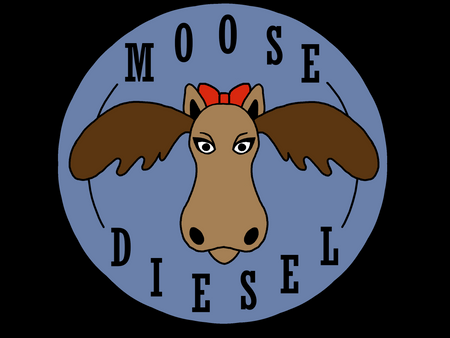
Horsepower ratings for our products
We often get asked "How much horsepower will my truck make with a Moose Pump?"
This is a difficult question to answer for a variety of reasons. In order to provide a meaningful answer, it is best to first understand that horsepower ratings are very subjective. Horsepower ratings get kicked around a lot by companies advertising performance products, because large numbers are impressive and easy to sell based on the "feel good" approach to a sale. Unfortunately, advertising a horsepower rating really only gives you a relative point on a line representing the possibility of a certain amount of horsepower.
Horsepower is defined by Webster as "a unit of power equal in the U.S. to 746 watts and nearly equivalent to the English gravitational unit of the same name that equals 550 foot-pounds of work per second". Most people will read that and scratch their heads. A more complete understanding can be found on Wikipedia. (https://en.wikipedia.org/wiki/Horsepower)
The reason we bring this to your attention is so that it is understood that horsepower is a calculated number. The calculations can vary, and the methods of measuring torque, which is really the only number that can be ascertained with any degree of accuracy can vary. Add to this the confusion over torque being measured at the crankshaft, or the wheels, and the myriad of environmental factors affecting these readings, and you end up with a relatively useless number.
Because the majority of published numbers on the web are obtained by enthusiasts on chassis dynamometers, it is impossibly to guarantee that one person's experience with a particular horsepower measurement can be repeated or even duplicated. A different dyno, different day, different weather or different operator can all affect the output of a given powertrain.
Consequently, we do not perform dynamometer testing of our pumps or injectors, and have no specific horsepower numbers to report. What we can do however, is offer a mathematical number based on fuel flow which we do measure and report. The formula is basically this. We use a constant of 2.83 for Ford and 2.85 for GM which is derived from an average result across Stanadyne documents. This number is the amount of power derived from 1cc of fuel per 1000 strokes. Consequently, our Moose Pump products break down this way. , a 6.5L with a 70cc pump is rated at 200HP. Yet a 7.3L at 70cc is only 190HP. These are published figures from Stanadyne. We have no idea how they got them. Using this math, we can make this table for Ford.
Mini Moose = 60cc X 2.83 = 170HP
Baby Moose = 70cc X 2.83 = 191HP
Moose Junior = 90cc X 2.83 = 255HP
Bull Moose = 100cc X 2.83 = 283HP
Omega Moose = 120cc X 2.83 = 340HP
Keep in mind, that the formula is based on ideals. The base figures were most likely obtained at the crank and at the factory. There must be good compression, adequate oxygen to burn that amount of fuel, and adequate cooling. As the amount of fuel goes up, the likelihood of that ideal being present, decreases. Also, our advertised fuel ratings are at peak flow, around 1400 to 1800 engine RPM. It is difficult if not impossible to get enough oxygen into the cylinder at that speed to burn all that fuel. Keep in mind that air is not just oxygen. So boost pressure is not necessarily representative of the amount of oxygen present. Higher boost pressures result in air that is hotter. Hot air has its molecules spaced far apart. Cool dense air does not. So while 14 PSI of boost sounds better then 7, if the 7 is cold and the 14 is hot, the engine running on 7 PSI is going to be a lot happier, all things being equal (which they never are). It is also physically impossible to keep getting the same amount of fuel out of a pump as the RPM's increase.
